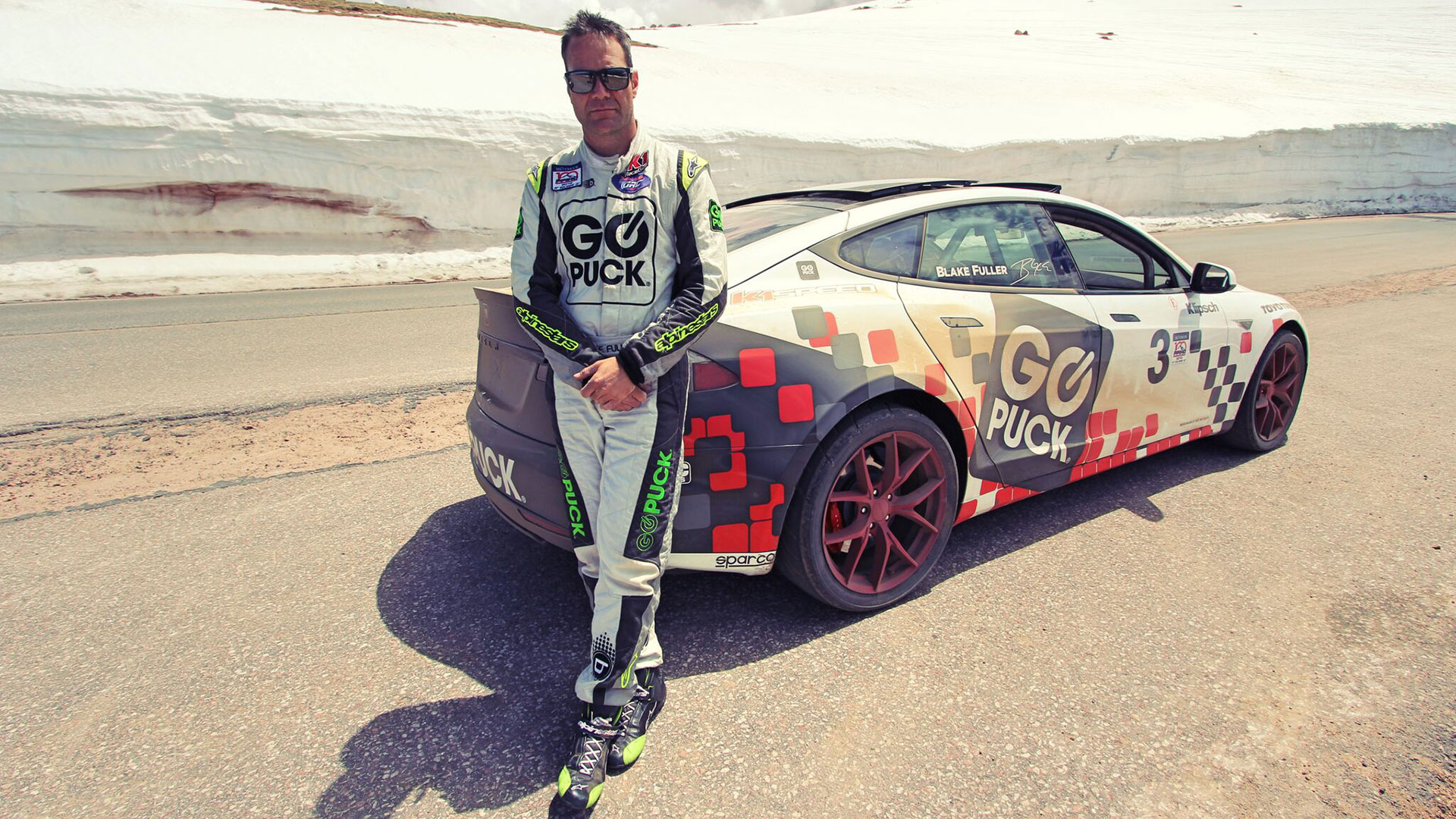

When the 100th running of the Pikes Peak Hill Climb kicks off this weekend, electronics entrepreneur and racing driver Blake Fuller will be there, along with his Tesla Model S. Given the enthusiastic fan base that turns out for the race, as well as Colorado’s generous electric vehicle tax credit, odds are good his Tesla won’t be the only one there.
It will, however, be the only one anyone cares about. Fuller will be racing his specially-modified Model S straight up the mountain as one of the competitors in the event—making it the first time one of Elon Musk’s electric cars will compete in an event that’s become one of the pillars of electric vehicle competition.
“It’s pretty exciting to build the first Tesla race car,” Fuller told The Drive. “I’m kind of surprised no one has done it sooner.”
To create a Tesla capable of hunting for a class victory on the slopes, Fuller and his team started with the big-bore P 90D version of the Model S, then set about prepping it for competition. The group’s primary challenge: finding ways to optimize both battery capacity and efficiency of energy use.
The stock 90 kWh battery, as Fuller described it, is optimized to conserve output in order to last for as many charging cycles as possible. That means it has a lot of extra capacity…which, in racing terms, translates to extra bulk. A race car, on the other hand, needs exactly the opposite set of qualities from its battery.
“We don’t have a 100,000-mile capacity for this car,” Fuller said. In exchange, however, the car’s batteries are able to use much more of their total capacity.
Likewise, the racing battery doesn’t need as much capacity as the stock P 90D’s 90 kWh setup. “The battery pack is five times larger than it needs to be to run up the mountain,” he said. The car needs about 20–22 kWh of energy to perform a competition run up the mountain, Fuller added.

So will the battery pack he uses actually be 80 percent lighter than the production version, as was rumored? “It’s possible,” Fuller said coyly. The car, Fuller said, has proven itself faster with the lighter battery, but he said they haven’t determined whether it will be the best choice for competition. “The question, will the car run with that at the race?”
Of course, recharging the battery at Pikes Peak presents its own set of problems. “Besides lightning, there is no electricity up there,” he said.
Slicing weight out of the Model S was also a priority for the team. Even setting the battery aside (rather literally), Fuller and his crew were able to cut 500 pounds out of the car when compared to the stock Model S P 90D. And that was after adding back weight in the form of a roll cage and other requisite safety tweaks. Still, finding wheels and tires capable of handling the car’s two tons of mass under Pikes Peak conditions proved yet another challenge, especially considering the car’s impressive grip and massive zero-rpm torque.
The finished product, he said, should rip from 0 to 60 mph in around 2.4 seconds. And like all electric cars, its motors won’t be affected by the changing altitude—one of the reasons everyone from Acura to Suzuki has begun competing in the race’s burgeoning electric vehicle class.

“For such a historic race, it really is such an area of innovation,” Fuller said.
It may be the first time a Tesla has taken to the mountain in the heat of competition, but it isn’t Fuller’s first rodeo at Pikes Peak. Now 37 years old, he’s been coming to the storied hill climb since he was in high school. He’s competed in the event four times before, but never in a purely electric car—mostly in production-based Hondas and Acuras.
Fuller hopes to use what he and his team learned while optimizing the Tesla to improve the Go Puck, the wearable, rugged battery pack he developed for the sort of folks who enjoy squirrel-suiting through rock formations. As for the car itself, the team plans to bring it to SEMA this fall, as well as enter it in electric vehicle track events. The team may even toy around with tying the car’s Autopilot into its competitive mission. “One day,” Fuller said, “it may not demand a driver at all.”
But that’s all still well down the road. For now, Fuller and his team are still monkeying away on the Tesla in advance of the race on Sunday. “[Development work] ends when the green flag drops.”